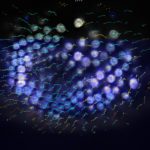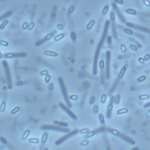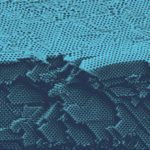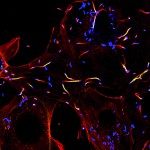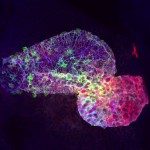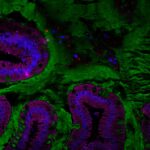Link to Pubmed [PMID] – 39719371
Link to HAL – hal-04862908
Link to DOI – 10.1080/19490976.2024.2444411
Gut microbes, 2024, 17 (1), pp.2444411. ⟨10.1080/19490976.2024.2444411⟩
Clinical symptoms of Clostridioides difficile infection (CDI) range from diarrhea to pseudomembranous colitis. A major challenge in managing CDI is the high rate of relapse. Several studies correlate the production of CDT binary toxin by clinical strains of C. difficile with higher relapse rates. Although the mechanism of action of CDT on host cells is known, its exact contribution to CDI is still unclear. To understand the physiological role of CDT during CDI, we established two hypoxic relevant intestinal models, Transwell and Microfluidic Intestine-on-Chip systems. Both were challenged with the epidemic strain UK1 CDT + and its isogenic CDT -mutant. We report that CDT induces mucin-associated microcolonies that increase C. difficile colonization and display biofilm-like properties by enhancing C. difficile resistance to vancomycin. Importantly, biofilm-like microcolonies were also observed in the cecum and colon of infected mice. Hence, our study shows that CDT induces biofilm-like microcolonies, increasing C. difficile persistence and risk of relapse.
